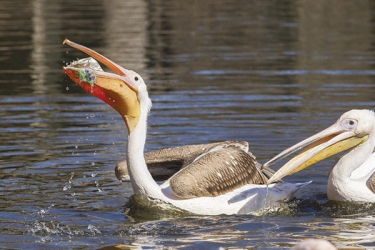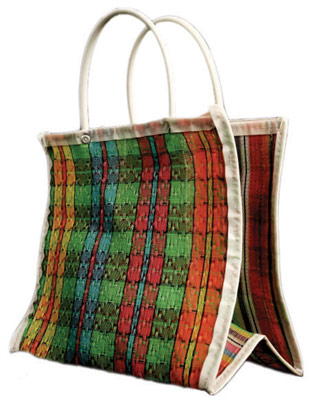The Big Bag Battle
By Barbara Siztman and Regis Goode February 2014
"Plastic or Paper?" asks your grocery clerk. How would you answer? Which is best for the environment? Across the country, cities and states are working on legislation to ban plastic bags and charge for paper. What are their concerns?
Paper
Paper bags are stronger, thicker, and can carry more than plastic. Since they are made from trees, a renewable resource, they are biodegradable. What’s the problem? Lots of trees are needed to make paper: three tons of wood chips yield only one ton of wood pulp! Producing a paper bag requires massive amounts of water, so paper mills are located near rivers and lakes. Also, their discharge releases harmful chemicals. Making paper bags requires more energy and creates more pollution than required to make plastic bags (Table 1). So, are plastic bags better?
Table 1: Environmental impact of paper bag production
| Pollution | Chemicals Released | Problem | Environmental Efftects |
|---|---|---|---|
| Air Pollution | H2S, NO2, SO2 | Acid rain | Lowers water pH |
| CO2 | Increased greenhouse effect | Global warming | |
| Water Pollution | Nitrogen and phosphorus compounds | Algal bloom and decomposition | Dead zones |
| Cl2 from bleaching | Chlorinated organics | Toxic to aquatic animals |

Plastics

What are the advantages of using plastic bags? They are cheaper and more water resistant. They consume fewer resources than paper bags so production costs are less. In the landfill, they require less space. Although produced from a nonrenewable resource, they are made from petroleum fractions that have little commercial value. But plastic bags may not be the answer! The United States consumes 380 billion bags each year. Unlike paper, they are not biodegradable; instead, they photodegrade into tiny plastic pieces that block the gastrointestinal tracks of animals. This particularly affects marine life like sea turtles that mistake the bags for jellyfish. Plastic bags account for 10% of litter washed up on U.S. shorelines. So is there an alternative?
Resusable Bags

Considering the problems previously notes, are reusable bags the answer? They are made of strong, durable material such as canvas. Reusing them reduces landfill waste and the energy consumed during production, transportation, and recycling. Almost perfect, right? Not completely! For example, a leak from a meat package collecting in the canvas fibers may provide a safe haven for bacterial growth, especially when left in a warm car. In May 2012, a girls’ soccer team in Beaverton, Ore., was sickened by a norovirus traced to their contaminated, reusable team snack bag. Ensuring safety will required special care of reusable bags.
What Should We Do?
To check out regulations in your area, search online for the “National Conference of State Legislatures” and “plastic bag legislation.” Soon, scientific research may come to our rescue. The GreenDiamond bag company has developed a process using chitin from discarded crab shells to make their bags microbial resistant. They advertise "the only triclosan-free, antimicrobial reusable shopping bag." In the meantime, read more on recycling in the article titled “It’s Not Easy Being Green… Or Is It?” on p. 12 of the print issue.

